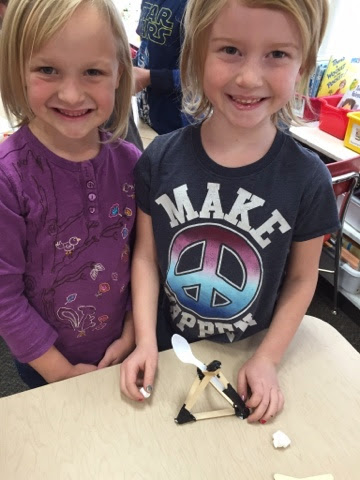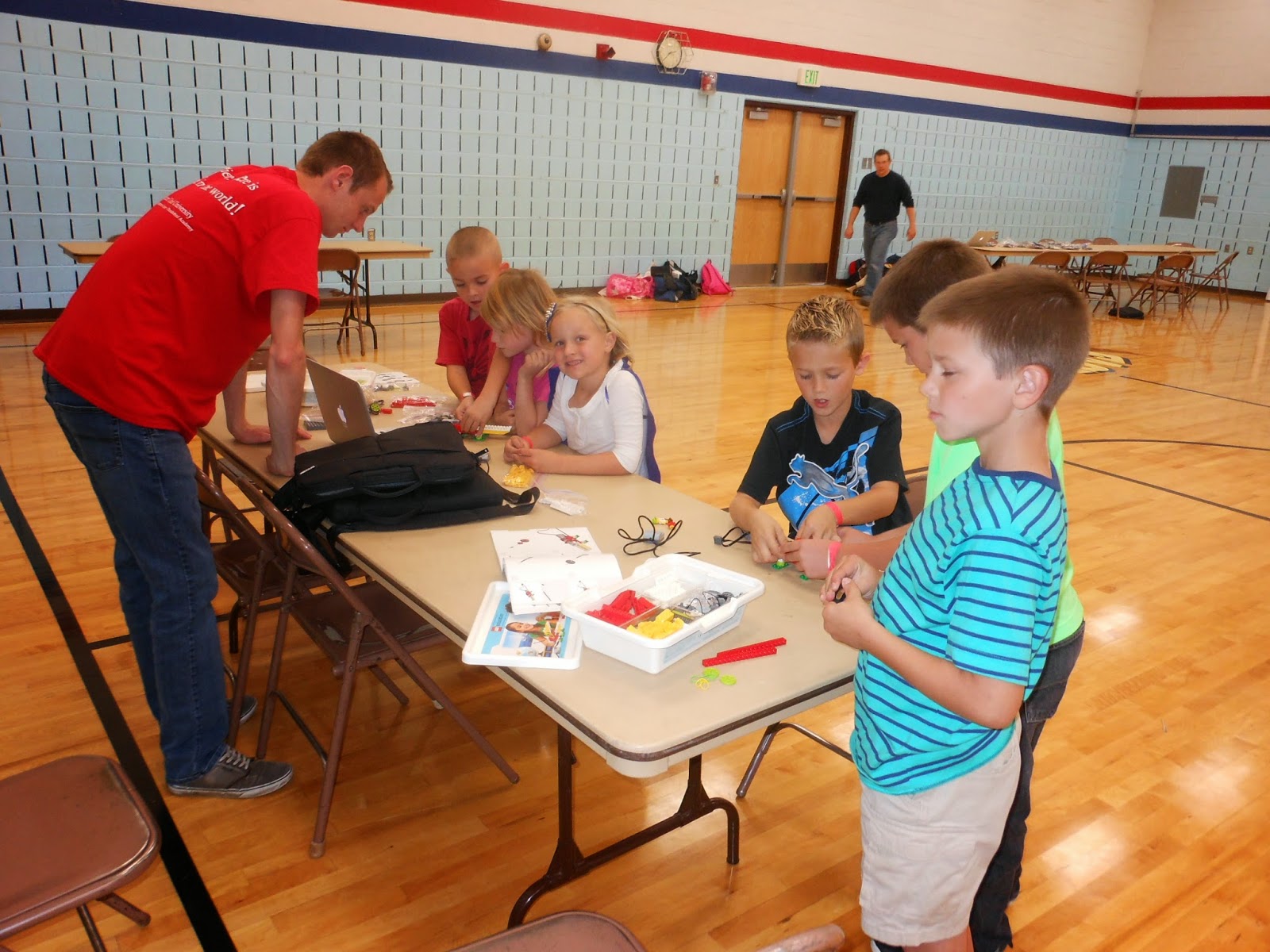It was fun to watch the kids create their own designs. Most didn't finish so we will continue building and hold the competition next week.
Wednesday, December 3, 2014
Sunday, November 2, 2014
Wednesday, October 22, 2014
Fish and Planes
What do fish and airplanes have in common?
Since water is roughly 750 times more dense than air, a fish must overcome an incredible amount of drag in order to stay in motion. Although airplanes don't have much of a problem with this, they must keep themselves off the ground which requires overcoming the force of gravity. As we can see, flying and swimming are very different.
Dr. Grant helped us understand that the speeds of both airplanes and fish increase with a greater length to width ratio.
Each student built a paper airplane and measured how far it could fly.
Next, they measured the planes' length to width ratios and compared them on a graph to how far they flew. For the most part, we observed that the long and skinny planes flew the furthest.
Then, the students measured the length to width ratios of several differently shaped fish. We couldn't race the fish, so we predicted the relative speed of varying fish based on these ratios by knowing the similarities between fish and airplane propulsion.
Tuesday, October 21, 2014
Waste Management
Waste Management
Landfills are efficient systems designed to deal with our waste. However, it is better to limit the amount of waste we put into them. One way to do this is through RECYCLING!
Students learned that items such as paper can be reused. They reused pieces of paper to make and race origami frogs.
Watershed
What is a Watershed?
A watershed is an area of land in which all of the water therein flows to the lowest point. This lowest point is often a river, ocean, or underground water table. Rain and snow melt cause this flow of water.
We learned that there is a lot we can do to keep our watersheds clean!

Holly Hadley from the Forest Service came and helped us learn. She brought an interactive watershed model.


The students teamed up to compete in building the best water filters.
Water filters can be man-made, but the best filters are already provided by nature! Natural areas such as wetlands and forests are important parts of our community because they purify our water.
We built these water filters our of natural things such as dirt, clay, and plants. Look at all the gunk this filter captured!
Friday, October 3, 2014
Becoming Scientists
Becoming Scientists
Through a 3-week process, Professor Eastep helped us to investigate natural phenomena on the playground by using the scientific process. Students teamed up to observe, ask questions, and then form an experiment in order to answer one of their questions.
To sum up the learning process, students shared their findings and conclusions with each other.
Subscribe to:
Posts (Atom)









































